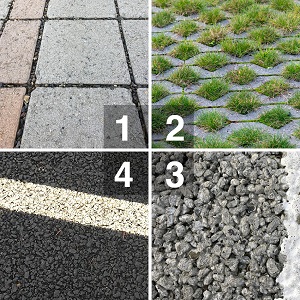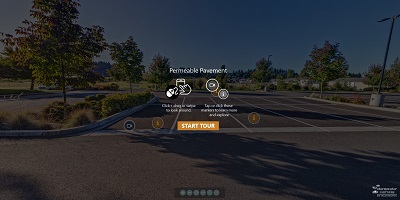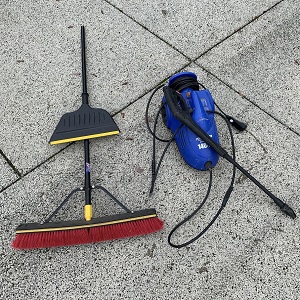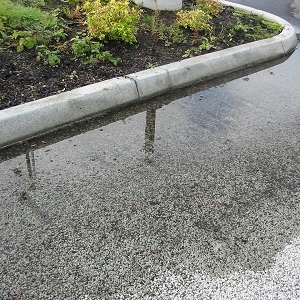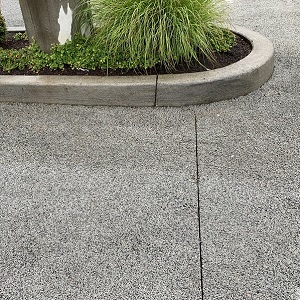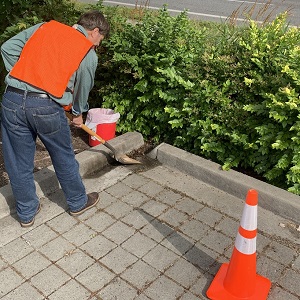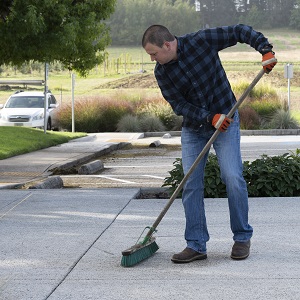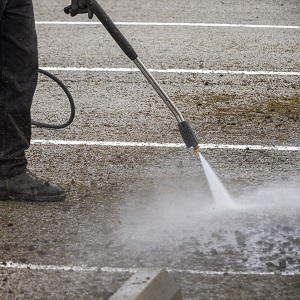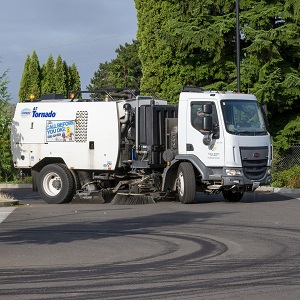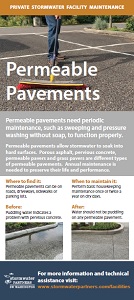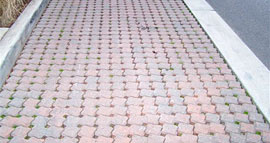Permeable pavements and pavers
Permeable pavements and pavers allow stormwater to infiltrate the underlying aggregate base, where it soaks into the ground or drains to a system of underdrains. This reduces runoff and helps to mimick the natural hydraulic cycle. Maintaing permeable pavements helps to prevent standing water, which is a sign the pavements are not infiltrating properly. Permeable pavements include permeable pavers, pervious concrete, porous asphalt and grass pavers.
Depending on the system and use, paver gaps may be filled with various infiltrating material. In lower traffic areas, a soil and planting mix could be used, while in higher traffic areas, a gravel system may be more appropriate. Pervious pavements typically consist of a layer of specially formulated concrete or asphalt on top of a thick layer of gravel (8-24 inches). As water passes through the pavement and gravel, contaminants are filtered out. Routine maintenance of these pavements is needed to allow water to pass freely.
1 - permeable pavers, 2 - grass pavers,
3 - pervious concrete, 4 - porous asphalt
Where you'll find it:
Permeable pavements can be used for roads, driveways, sidewalks or parking lots. They can also be used in conjunction with traditional pavements, such as grass pavers at the end of a concrete driveway.
When to maintain it:
Perform basic housekeeping maintenace once or twice a year on dry days. Look for standing water during rain events.
What you'll need:
- push broom
- dust pan
- pressure washer without soap (optional)
A vacuum street sweeper may also be needed to maintain large areas of permeable pavements.
Tools you'll need:
Problem:
Correct:
Permeable pavement maintenance tasks include:
Inlets, outlets and curb cuts
Sweep
Pressure wash
Vacuum street sweep
Maintenance sheets
Permeable pavement (includes pervious concrete, porous asphalt, permeable pavers, open-celled paving grid with gravel or grass)
Maintenance is needed if you see these signs
Standing water during or after rainfall
Visible debris or sediment on pavement surface
Height of gravel between pavers depleted by more than .5 inches
Moss growth inhibits infiltration or poses slip safety hazard
Tips for fixing problems and general maintenance
Distribute gravel over pavers and sweep into joints between pavers
Replace broken pavers as needed to prevent structural instability
